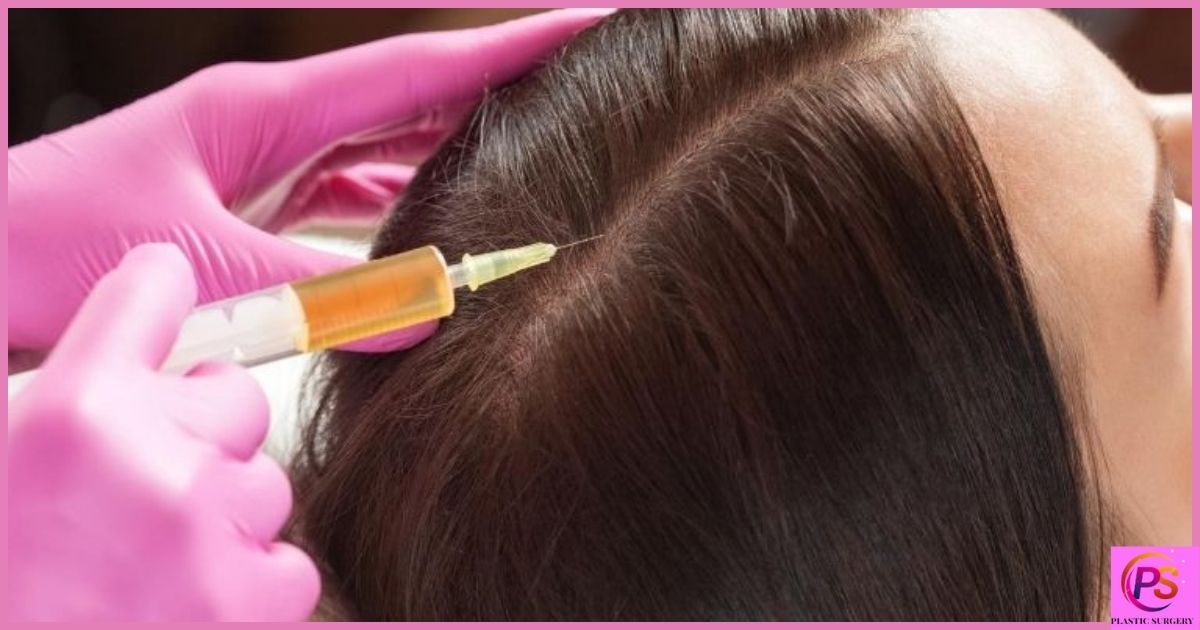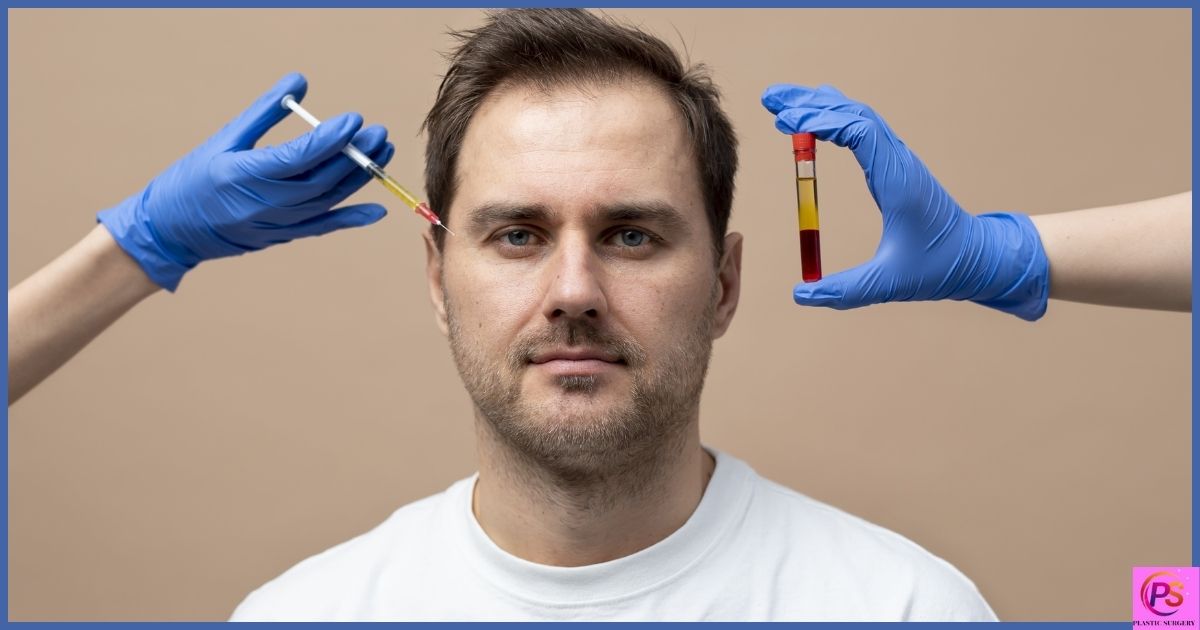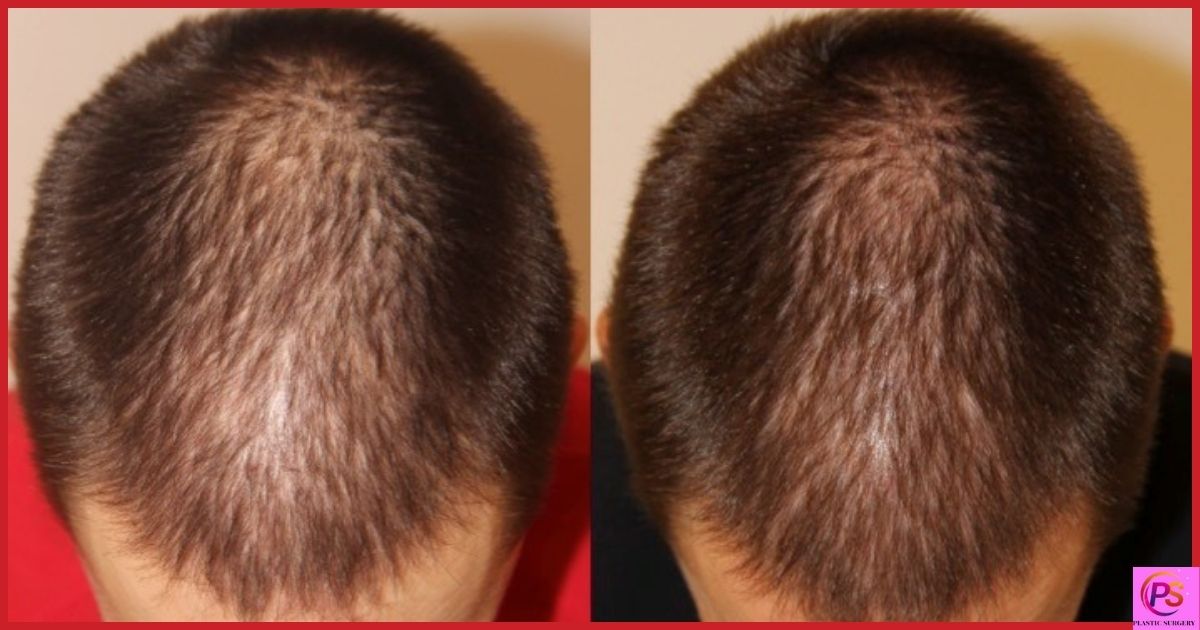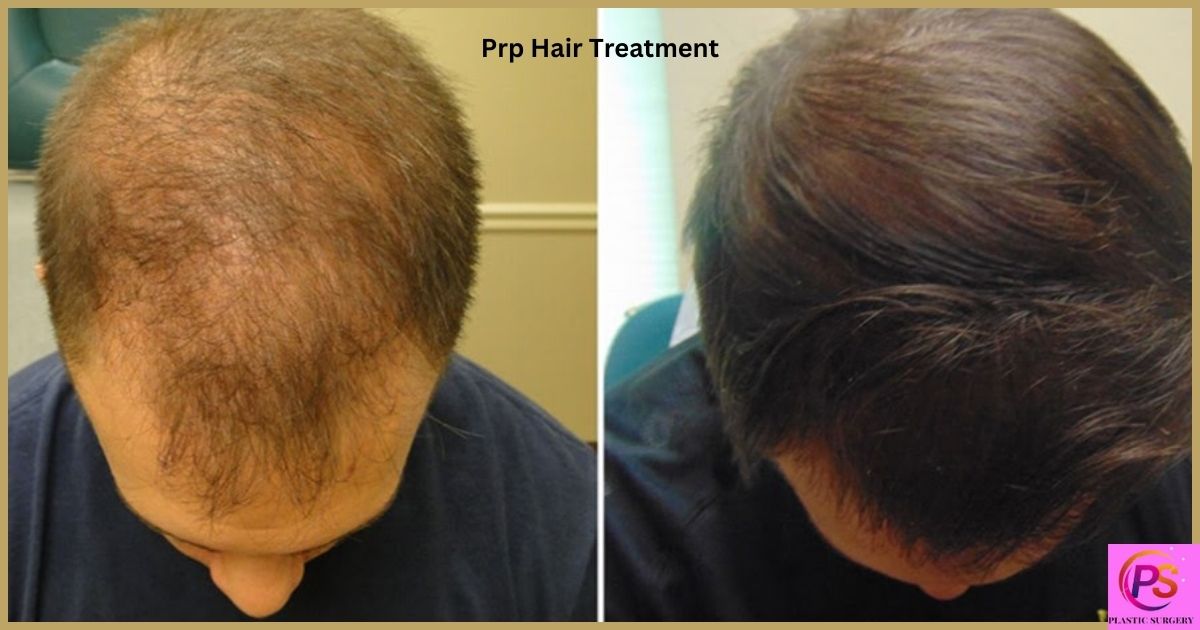Hair loss and thinning hair affect many people, both men and women. If you’re struggling with this, there’s good news: PRP hair restoration treatments offer a solution that’s often better than just shampoos or medications and is much less invasive than a hair transplant.
PRP stands for Platelet-Rich Plasma, which uses your own body’s healing abilities to help restore hair growth. This treatment could be just what you need. If you’re in the Prosper, Frisco, Plano, McKinney, or Dallas-Fort Worth area and want to learn more about PRP hair restoration, schedule a consultation with us today to find out how it can benefit you.
PRP hair treatment can make a big difference in your hair growth journey. It works by boosting the activity of your hair follicles, which can lead to improved hair density. Many people find this method a great alternative to more invasive procedures.
The Hair Loss Dilemma
Hair loss affects millions worldwide, transcending age and gender barriers. It’s not just about vanity; for many, it’s a deeply emotional issue that can impact self-esteem and overall quality of life. Traditional treatments like topical solutions and oral medications have long been the go-to options, but their effectiveness can be limited and unpredictable.
Enter PRP hair treatment – a revolutionary approach that’s turning heads in the aesthetic medicine world. By utilizing your body’s natural healing process, PRP therapy offers a promising solution for those seeking to stimulate hair growth and combat hair thinning without resorting to invasive surgical procedures.
Understanding PRP Hair Treatment

What is Platelet-Rich Plasma?
Platelet-rich plasma is exactly what it sounds like – a concentration of platelets derived from your own blood. But these aren’t just any platelets; they’re powerhouses of growth factors, stem cells, and proteins that play a crucial role in tissue repair and regeneration.
Read This Blog:
Daxxify Cost: Uncover Affordable Options And Pricing Details
The Science Behind PRP for Hair Growth
When injected into the scalp, PRP works its magic on hair follicle health. The concentrated growth factors stimulate hair growth by:
- Increasing blood supply to the follicles
- Enlarging the hair shaft
- Triggering and maintaining the growth phase of the hair cycle
How PRP Differs from Other Hair Restoration Methods
Unlike hair transplants, PRP doesn’t require surgery. And unlike topical treatments, it addresses the root cause of hair loss by rejuvenating the follicles themselves. It’s a natural approach that works with your body’s own regenerative properties.
The PRP Hair Treatment Process
Initial Consultation and Scalp Assessment
Your journey begins with a thorough evaluation. A qualified practitioner will assess your scalp health, discuss your hair loss history, and determine if you’re an ideal candidate for PRP therapy.
Step-by-Step Breakdown of the Procedure
- Blood Draw: A small amount of blood is taken from your arm.
- Centrifugation: The blood is processed in a centrifuge to separate the platelet-rich plasma.
- Preparation: The PRP is extracted and prepared for injection.
- Injection: Using fine needles, the PRP is carefully injected into targeted areas of the scalp.
Cutting-Edge Technologies Used in PRP Extraction
Modern PRP treatments often utilize advanced systems like ProGen PRP, which can produce a higher concentration of platelets with a smaller blood sample, enhancing both comfort and efficacy.
Benefits of PRP Hair Treatment

PRP therapy offers a multitude of benefits for those struggling with hair loss:
- Stimulation of Dormant Hair Follicles: PRP can awaken sleeping follicles, promoting new hair growth.
- Increased Hair Thickness and Density: Existing hair strands often become thicker and healthier.
- Natural-Looking Results: Since it uses your own cells, the results blend seamlessly with your existing hair.
- Minimal Downtime: Most patients can return to their normal activities immediately after treatment.
- Versatility: PRP can be used alone or in combination with other hair loss treatments for enhanced results.
Ideal Candidates for PRP Hair Treatment
PRP hair therapy can be effective for a wide range of individuals, but it’s particularly suited for:
- Those with androgenic alopecia (male or female pattern baldness)
- Individuals with thinning hair
- People experiencing early stages of hair loss
“PRP therapy has shown remarkable results in patients with patterned hair loss, offering hope where traditional treatments have fallen short.” – Dr. Sarah Johnson, Trichologist
The PRP Treatment Journey
Preparing for Your First Session
To ensure the best possible outcome, follow these pre-treatment guidelines:
- Avoid blood-thinning medications for a few days prior
- Stay hydrated
- Eat a nutritious meal before your appointment
What to Expect During Treatment
The procedure typically takes about an hour. While you may feel some discomfort during the injections, many patients find it quite tolerable. Some practitioners use numbing agents to enhance comfort.
Post-Treatment Care and Recovery
After your PRP session:
- Avoid washing your hair for 24 hours
- Skip intense exercise for a couple of days
- Be gentle with your scalp for the first week
Recommended Treatment Schedule for Optimal Results
Most practitioners recommend:
| Phase | Frequency | Duration |
| Initial | Once a month | 3-4 months |
| Maintenance | Every 3-6 months | Ongoing |
Combining PRP with Other Hair Loss Treatments
PRP’s versatility shines in its ability to complement other hair restoration methods:
- Medications: PRP can enhance the effects of Minoxidil or Finasteride.
- Low-Level Laser Therapy: Combining PRP with laser treatments may accelerate results.
- Hair Transplants: PRP can improve graft survival rates and stimulate growth in surrounding areas.
Real Patient Experiences
Case Study: John’s Hair Regrowth Journey
John, a 42-year-old marketing executive, had been battling male pattern baldness for years. After six months of PRP treatments:
- Hair density increased by 30%
- Scalp coverage improved significantly
- Self-confidence soared
Before and After: [Insert before and after images here]
Testimonial
“I was skeptical at first, but after my third PRP session, I started noticing baby hairs sprouting up. It’s been a game-changer for my confidence!” – Emily, 35
The Science Behind PRP’s Effectiveness

Recent studies have shed light on why PRP is so effective for hair restoration:
- A 2019 study in the Journal of Cosmetic Dermatology found that PRP increased hair count by 29% after 6 months of treatment.
- Research published in Stem Cells Translational Medicine highlighted PRP’s ability to activate stem cells in hair follicles.
Understanding Growth Factors and Their Role
PRP is rich in growth factors such as:
- Platelet-Derived Growth Factor (PDGF)
- Vascular Endothelial Growth Factor (VEGF)
- Epidermal Growth Factor (EGF)
These proteins work synergistically to promote cell growth, improve blood supply, and stimulate the hair growth cycle.
Choosing a PRP Hair Treatment Provider
Selecting the right practitioner is crucial for achieving optimal results. Look for:
- Board-certified dermatologists or plastic surgeons
- Experience specifically with PRP hair treatments
- State-of-the-art equipment and facilities
Questions to Ask During Your Consultation
- How many PRP hair treatments have you performed?
- Can I see before and after photos of your patients?
- What kind of results can I realistically expect?
- How do you ensure the highest concentration of platelets in the PRP?
Investment in Your Hair’s Future
The cost of PRP hair treatment can vary based on several factors:
- Geographic location
- Practitioner’s expertise
- Number of sessions required
While PRP may seem pricier upfront compared to over-the-counter solutions, many patients find it more cost-effective in the long run due to its lasting results and minimal maintenance requirements.
Comparing PRP to Other Hair Restoration Methods
| Method | Invasiveness | Downtime | Long-term Effectiveness |
| PRP | Minimal | None to minimal | High |
| Hair Transplant | High | 1-2 weeks | High |
| Topical Treatments | None | None | Moderate |
| Oral Medications | None | None | Moderate |
Embracing a Fuller, Healthier Head of Hair
PRP hair treatment represents a significant leap forward in the field of hair restoration. By harnessing your body’s own regenerative properties, it offers a natural, effective solution to hair loss that can dramatically improve both your appearance and your confidence.
Whether you’re just starting to notice thinning or have been battling hair loss for years, PRP therapy could be the key to revitalizing your hair growth journey. With its ability to stimulate dormant follicles, increase hair thickness, and promote overall scalp health, PRP is changing lives one treatment at a time.
Ready to take the next step? Consider scheduling a consultation with a qualified PRP provider in your area. Many aesthetic centers, including those in Prosper, Texas, offer state-of-the-art PRP treatments in comfortable, welcoming settings. Don’t let hair loss hold you back any longer – explore the possibilities of PRP and embark on your journey to a fuller, healthier head of hair today.
The PRP Treatment Journey: A Closer Look
Understanding the details of the PRP treatment process can help alleviate concerns and set realistic expectations. Let’s dive deeper into what you can expect during your hair regrowth journey.
Preparing for Your First Session
Proper preparation is key to maximizing the effectiveness of your PRP treatment. Here are some essential steps to take:
- Hydration: Drink plenty of water in the days leading up to your appointment. Well-hydrated blood makes for easier extraction and higher-quality PRP.
- Diet: Consume foods rich in iron and vitamins to promote healthy blood cell production. Consider adding leafy greens, lean meats, and fruits to your diet.
- Medication Management: Consult with your provider about any medications you’re taking. You may need to temporarily discontinue blood thinners or NSAIDs.
- Scalp Care: Avoid harsh chemical treatments or coloring your hair for at least a week before the procedure.
- Stress Reduction: Practice relaxation techniques to lower stress levels, which can impact your body’s healing response.
The Treatment Day Experience
On the day of your PRP session, here’s what you can expect:
- Arrival and Preparation: You’ll be welcomed into a comfortable setting at the aesthetic centre. The treatment area will be cleaned and prepped.
- Blood Draw: A small amount of blood (usually about 20-30ml) will be drawn from your arm.
- PRP Processing: While you wait, your blood will be processed in a centrifuge to isolate the platelet-rich plasma.
- Scalp Numbing: A topical anaesthetic may be applied to ensure your comfort during the injections.
- PRP Injection: Using very fine needles, the PRP will be strategically injected into areas of thinning or hair loss.
- Post-Treatment Care: Your practitioner will provide specific aftercare instructions tailored to your needs.
The entire process typically takes about 60-90 minutes, making it a convenient option for those with busy schedules.
Recovery and Aftercare
Following your PRP treatment, it’s crucial to take proper care of your scalp to ensure optimal results:
- Immediate Aftercare:
- Avoid touching or washing your scalp for at least 4 hours post-treatment.
- Sleep with your head slightly elevated the first night.
- First Week:
- Use gentle, sulfate-free shampoos.
- Avoid heat styling and harsh chemicals.
- Stay hydrated and maintain a nutrient-rich diet.
- Long-Term Care:
- Protect your scalp from excessive sun exposure.
- Continue any prescribed hair care regimens.
- Attend follow-up appointments as scheduled.
The Timeline of Results
Understanding the timeline for PRP hair treatment results can help manage expectations:
| Timeframe | Expected Progress |
| 1-2 months | Reduction in hair shedding |
| 3-4 months | Noticeable improvement in hair thickness |
| 6-12 months | Significant increase in hair growth and density |
Remember, individual results may vary, and consistency with treatments is key to achieving and maintaining optimal outcomes.
Combining PRP with Other Hair Loss Treatments

PRP’s versatility makes it an excellent companion to other hair restoration methods. Here’s how it can be integrated into a comprehensive treatment plan:
PRP and Medications
- Minoxidil (Rogaine): PRP can enhance the absorption and efficacy of topical minoxidil, potentially leading to faster and more noticeable results.
- Finasteride (Propecia): For male patients, combining oral finasteride with PRP treatments may provide a synergistic effect in combating androgenic alopecia.
PRP and Low-Level Laser Therapy (LLLT)
Integrating LLLT devices with PRP treatments can:
- Improve blood flow to the scalp
- Enhance the metabolism of hair follicle cells
- Potentially extend the duration of PRP’s effects
PRP and Hair Transplantation
For those considering or undergoing hair transplant surgery, PRP can play a crucial role:
- Pre-transplant: Preparing the scalp for optimal graft acceptance
- During transplant: Improving graft survival rates
- Post-transplant: Accelerating healing and stimulating growth in both transplanted and native hair
The Science of Scalp Health
Understanding the biology behind hair growth can help appreciate the role of PRP in hair restoration:
Also Read This Blog:
Prp Treatment For Hair Cost: Everything You Need To Know Before Booking
The Hair Growth Cycle
- Anagen Phase: Active growth phase (2-7 years)
- Catagen Phase: Transitional phase (2-3 weeks)
- Telogen Phase: Resting phase (3-4 months)
PRP works by prolonging the anagen phase and shortening the telogen phase, resulting in more active hair follicles and less shedding.
Factors Affecting Hair Health
- Hormones: Dihydrotestosterone (DHT) plays a significant role in male pattern baldness.
- Nutrition: Deficiencies in iron, zinc, and vitamins can impact hair growth.
- Stress: Chronic stress can push hair follicles into a prolonged telogen phase.
- Scalp Conditions: Issues like seborrheic dermatitis can affect hair health.
PRP addresses many of these factors by improving blood supply, delivering nutrients, and creating a healthier scalp environment.
Choosing the Right PRP Provider
Selecting a qualified practitioner is crucial for achieving optimal results. Here are some factors to consider:
- Credentials: Look for board-certified dermatologists or plastic surgeons with specific training in PRP hair treatments.
- Experience: Inquire about the number of PRP procedures they’ve performed and their success rates.
- Technology: Ensure they use FDA-approved PRP systems and follow best practices for preparation and application.
- Facility: Choose a clean, modern aesthetic center that prioritizes patient comfort and safety.
- Patient Reviews: Read testimonials and before-and-after case studies from previous patients.
Investment Considerations
While the cost of PRP hair treatment can vary, it’s essential to view it as an investment in your appearance and confidence. Here’s a breakdown of potential costs:
| Treatment Phase | Estimated Cost Range |
| Initial Series (3-4 treatments) | $1,500 – $3,000 |
| Maintenance Sessions | $400 – $800 per session |
Factors influencing cost include:
- Geographic location
- Practitioner expertise
- Quality of PRP system used
- Number of areas treated
Many aesthetic centers offer financing options or package deals to make treatments more accessible. Remember, the long-term benefits of PRP often outweigh the initial investment when compared to ongoing costs of topical treatments or the more invasive nature of hair transplants.
Embracing Your Hair Regrowth Journey
As you consider PRP hair treatment, remember that it’s not just about regaining hair – it’s about reclaiming confidence and embracing a renewed sense of self. The journey to fuller, healthier hair is a personal one, and PRP offers a natural, effective path forward.
Whether you’re dealing with early signs of thinning or more advanced hair loss, PRP’s ability to harness your body’s own regenerative properties makes it a powerful tool in the fight against hair loss.
By choosing a qualified provider, maintaining realistic expectations, and committing to the recommended treatment plan, you’re taking a significant step towards revitalizing your appearance and boosting your self-esteem.
Conclusion
PRP hair treatment stands as a beacon of hope for those battling hair loss. This innovative therapy harnesses the body’s regenerative properties to stimulate hair growth, increase follicle thickness, and revitalize scalp health. By utilizing growth factors and stem cells from your own blood, PRP offers a natural, minimally invasive solution to androgenic alopecia and hair thinning.
Whether used alone or in combination with other treatments, PRP has shown remarkable results in clinical studies and real-world applications. As you embark on your hair regrowth journey, consider the transformative potential of PRP therapy – it could be the key to unlocking a fuller, healthier head of hair and renewed confidence.
FAQs
Does PRP regrow hair?
Yes, PRP can help regrow hair. It wakes up sleeping hair follicles and makes them start growing hair again.
Is PRP treatment good for hair?
PRP is good for hair. It makes hair thicker, and stronger and can help stop hair loss for many people.
How long does PRP last for hair?
PRP effects can last about 1 to 2 years. But you might need touch-up treatments every 6 to 12 months to keep the results.
Is PRP painful?
PRP hair treatment involves small injections into the scalp, which might cause some discomfort, but it’s generally well-tolerated. Most people find the procedure manageable with minimal pain.

I am a website content writer with 5 years of experience in writing celebrity-related content. I also run a personal blog called “plasticscienceinfo.com,” where I share informational content.











